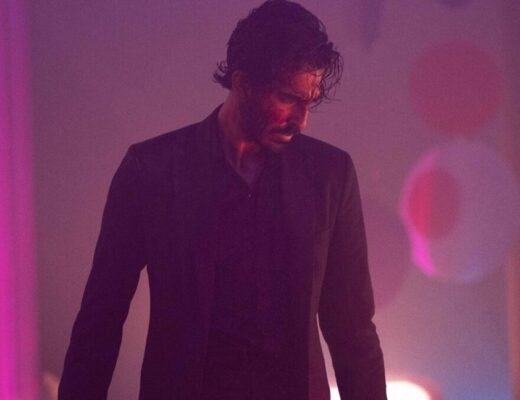Heinz Emigholz opens his latest, Slaughterhouses of Modernity, with a voice. This would have normally been shocking as Emigholz’s austere “Photography and Beyond” series of films lack any sort of voiceover, preferring the subjects (always architecture) to do the talking themselves. Oftentimes, this means an overview of an architect’s career (Perret in France and Algeria or Maillart’s Bridges) or an attempt to compare and contrast the details of certain works (Two Museums or Two Basilicas). Just like with Frederick Wiseman, if you’ve seen a few, you know what you’re going to get with the new, and with Emigholz, that means looking at buildings. But, his most recent fare has departed this system: actors grace the screen and talk in Streetscapes [Dialogue] (2017) and The Last City (2020), often in architectural spaces such that Emigholz can continue the spirit of the “Photography and Beyond” project.
But, a deviation does still appear in this new film. Never before has Emigholz quite editorialized his architectural tours. Title cards with names of cities and dates of the works usually give the only context to his series of shots, allowing the viewer to infer any meaning themselves. Perhaps a dilapidated building in the countryside followed by a pristine building in the city, both made in the same year by the same architect, is a commentary on how and what the government funds. Perhaps an empty auditorium shows how much community life has dwindled. Film studies professors typically label this as “structuralist,” and the process can be just as fun as it is quintessentially snobbish. This is not the case for Slaughterhouses, as Emigholz conducts lectures about the politics and history of each work and lays out the connections explicitly. One can still play the structuralist game, but there is a point to these works that is too important to be left out.
The initial lecture, read by Stefan Kolosko, laments the political elites’ theft of words like “modernism” and “tradition” such that they are robbed of meaning for the general population, yet their aesthetic will continue to dominate the landscape (a process that has also stolen the language of identity politics in the United States as wonderfully outlined in Olúfẹ́mi O. Táíwò’s recent Elite Capture). This explains the Art Deco approach to architect Francisco Salamone’s municipal buildings in Argentina, the very first modernist works in the country that often stick out and announce themselves as European land claims. Many were made during Argentina’s Infamous Decade, a time of political malfeasance and a sunken economy, to show the grandeur of industrial life, especially as farmers left the pampas for work in the cities. If this sounds like Italian futurism at work in Argentina, that’s because it is. Emigholz’s shots of municipal buildings then take a detour to post offices commissioned by none other than Benito Mussolini, then veer to cemetery portals with almost Brutalist crosses and a gigantic Art Deco Jesus. Finally, the titular slaughterhouses that “rise up like monuments or churches” in the pampas take the frame, each dominating the grassy plains around it. Some have been abandoned (one with an on-the-nose graffito: “Tell me baby, what’s your story?”), while others have been converted to museums or have at least been preserved. But the slaughterhouses merely serve as the central metaphor in Emigholz’s journey: afterwards, he shoots the flooded village of Villa Epecuén, the restoration of the Berlin Palace (which architect Arno Brandlhuber jumps in to editorialize as “one of the most disgusting buildings in the world”), and the antipode to these projects in Freddy Mamani Sylvestre’s utopian buildings of El Alto.
Kolosko even appears in-frame through his tours of Epecuén and the Humboldt Museum (attached to the Berlin Palace), acting as tour guide to what has been destroyed and what should have been destroyed, respectively. Thankfully, this is anything but literal as he mostly recounts a Borges story (”Deutsches Requiem”) that complements both locations. Indeed, this voiceover itself works to transform Emigholz’s art gallery-style into edifying essay film, allowing the members of the audience who do not have architecture doctorates to learn something. That “something” is best expressed in a signature Emigholz Dutch angle shot from this film: a brand-new window, unadorned, frames our view of the slaughterhouse ceiling where the rusty hooks still hang, just hang. A then-fascist, now-capitalist version of modernism can divorce these hooks from their meat, just as fascist thinking can divorce the Nazis’ train timetables from their purpose. When Emigholz ends on Sylvestre’s bright Neo-Andean cholets, parodies (yet reclamations) of European modernist opulence, the colors and shapes seem to find a way out of the fascist, colonial cityscapes of these South American cities. But, he notes, they too can be claimed as BMW showrooms or Berghain II. It’s just a bit harder, even comical, to imagine.
Published as part of NYFF 2022 — Dispatch 2.







